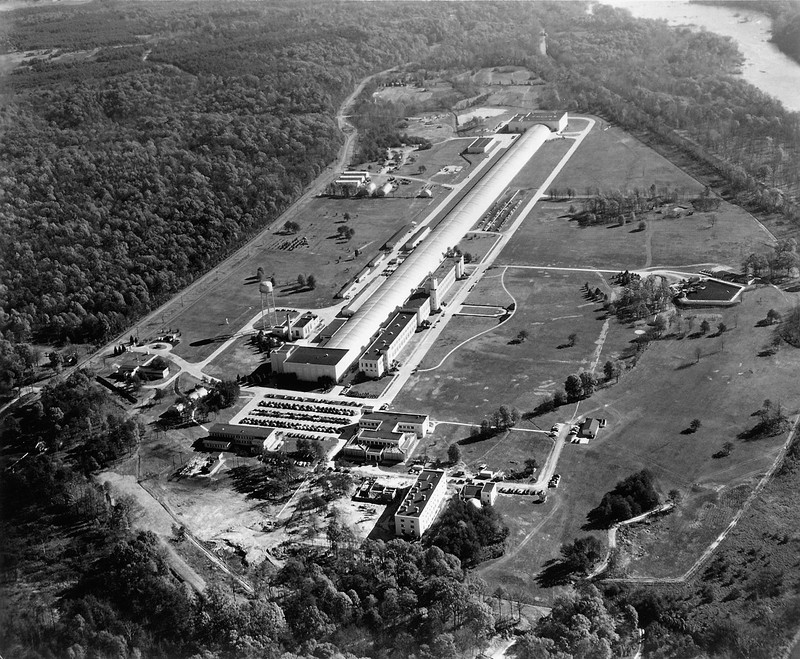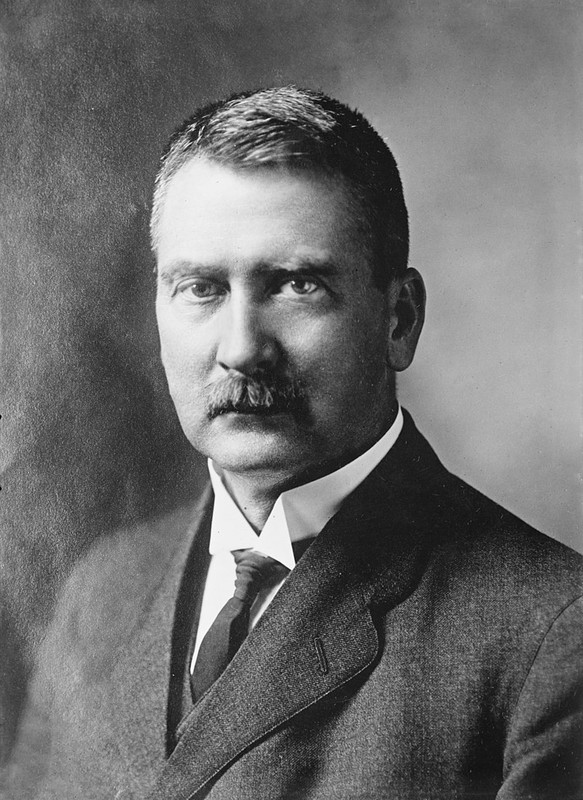David Taylor Model Basin
Introduction
Text-to-speech Audio
At nearly 3,000 feet long, the David Taylor Model Basin is one of the largest ship design testing facilities in the world. It was built in 1939 and is part of the Carderock Division of the Naval Surface Warfare Center, which is one of eight Naval Sea System Command Surface Warfare Centers in the United States. The basin is named after engineer and naval architect David Watson Taylor (1864-1940), who designed the experimental model basin at the Washington Navy Yard in Washington D.C. The facility contains a shallow-water basin, a deep-water basin, and high-speed basin, all of which use a variety of equipment to test ship and watercraft models. The model basin was added to the National Register of Historic Places in 1985. It was open to the public in the past but visitors have not been allowed inside since the Covid-19 pandemic.
Images
The David Taylor Model Basin, seen here around 1946, is one of the world's largest ship design testing facilities.

The basin is named after David Watson Taylor (1864-1940), who designed the experimental model basin at the Washington Navy Yard in Washington D.C.

Backstory and Context
Text-to-speech Audio
The history of model basin testing dates back to the late 1800s when British naval architect, William Froude (1810-1879), developed techniques to study ship models and using that information to design full-sized ships. Froude's research laid the groundwork for ship model basins built by the world's major maritime powers including the U.S. (the basin at the Navy Yard was built in 1899). David W. Taylor served as its director for 14 years.
Within a few decades, the basin at the Navy Yard became outdated. As a result, in the late 1930s Congress approved funds for the construction of the present facility. The Chief of the Bureau of Construction, Admiral Emory S. Land, suggested it be named in honor of Taylor. It was the most advanced model ship basin the world at the time and was used extensively throughout the World War II. Research performed here included examining the effects of structural modifications, how ships could be kept stable when damage from an attack, the hydrodynamic characteristics of torpedoes, and depth charges and towed bodies. New ship designs were tested and developed after the war including cataramans and air-cushioned vehicles. The first true submarines were designed here as well. Research has also been conducted for the Maritime Administration and the maritime industry. Two full-sized models of the Orion spacecraft, which was part of the 2022 non-crewed Artemis I mission to the moon, were also tested here.
Sources
"A Historical Mechanical Engineering Landmark: David Taylor Model Basin." The American Society of Mechanical Engineers. 1998. Retrieved from the Web Archive on. November 28, 2022. https://web.archive.org/web/20120314074018/http://files.asme.org/asmeorg/communities/history/landmarks/5528.pdf.
Allison, David K. "David Taylor Model Basin." National Park Service - National Register of Historic Places Nomination Form. October 17, 1985. https://mht.maryland.gov/secure/medusa/PDF/NR_PDFs/NR-936.pdf.
"Cool Facilities - The David Taylor Model Basin." Naval Gazing. August 30, 2019. https://www.navalgazing.net/David-Taylor-Model-Basin.
"Froude, William." Britannica. Last Updated November 24, 2022. https://www.britannica.com/biography/William-Froude.
Hurley, Todd. "NASA's Orion Spacecraft Modeled and Tested at Carderock." Naval Sea Systems Command. November 16, 2022. https://www.navsea.navy.mil/Media/News/Article/3219761/nasas-orion-spacecraft-modeled-and-tested-at-carderock.
Both images via Wikimedia Commons
